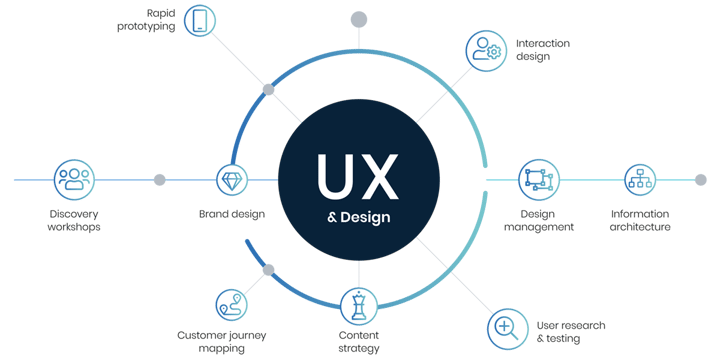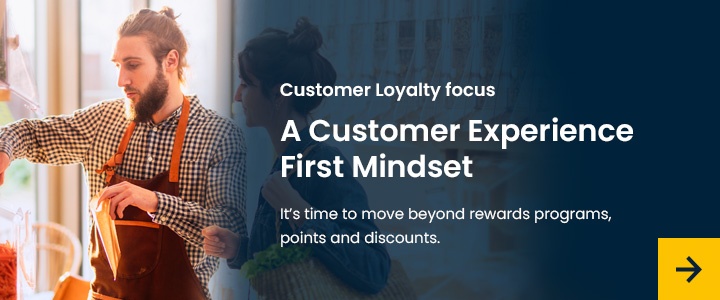Customers enjoy great customer experiences. That’s an easy statement that everybody can agree on. So, if you want to retain a customer base, you simply need to provide them with that.
Ah, if it were only that easy.
The first question that arises from that concept, that customers enjoy great customer experiences, is “What makes a great customer experience?” That’s the problem. There simply isn’t any kind of objective definition for great customer experiences.
Let’s take a moment to look into why that is.
On the one hand, there are quantifiable elements that can be said to improve the customer’s experience and checkout process when shopping. Fast checkout times, easily searchable inventory, accessible customer support and service options (i.e. a live chat), etc. But those things only make up a portion of the shopping experience as a whole.
Other factors like storefront design, branding, presentation of marketing materials and product information, are all qualitative by nature. They are fluid things that vary by customer expectation and taste and which are constantly changing via trends and modernization.
The good news is that e-commerce allows you to maintain a fluid marketplace that is able to change and adapt to reflect those trends and tastes as they happen.
In traditional physical retail, changing the customer experience means spending money for redesigning stores and/or new equipment. With e-commerce, change can happen at a whim, especially if you’re using the right marketplace platform.
Let’s take a look at what we feel are the two main components of user experience: UX and Customer Loyalty.
UX and Design
Stay Speedy
With e-commerce, UX (User Experience) is king.
If you hear “UX” and you immediately think of visual design and structuring of an e-commerce site, you’re only getting half the picture. Design is certainly an integral part of UX, but much of the impact is actually a result of what’s happening behind the scenes.
 For instance, if a site feels slow, users are going to be much more likely to bounce off of it before making any purchases. This is pretty much a universal truth.
For instance, if a site feels slow, users are going to be much more likely to bounce off of it before making any purchases. This is pretty much a universal truth.
A big part of our UX and design services is making sure that your e-commerce always feels fast. Yes, technically efficient sites are always a good thing. Every millisecond that you can shave off of the loading times of your marketplace’s various pages is going to help retain customer attention. But feeling fast is just as important.
When we work with a client to improve UX, we’re putting just as much emphasis on how the site’s responsiveness feels as we are on the technical performance. We use smart design strategies to separate the feel from the technical speed so that the user experience is separated from the limitations of their connection.
Scalability and Modular Design
Another important factor to consider is scalability. Like we mentioned earlier, many of the factors that define a great customer experience are fluid, and that means your e-commerce platform needs to be able to adapt to changing trends and conditions.
At Avensia, we always take a modular approach to design for a few reasons. One is that it’s simply faster to build using a modular approach, meaning we can complete your UX and get you ready for business much more quickly.
The other reason is that a modular design is more easily customizable. We use a library of design templates to start with, and then customize each component to maximize the design’s power to enhance the customer satifaction and overall experience in conjunction with what our client is going for.
As customer behavior changes and trends come and go, these designs can be easily modified and updated without having to change the entirety of the merchant’s online store at once.
Speaking of customer behavior, let’s talk about the third and most important aspect of UX and design.
Use Data To Give Customers What They Want
You may be wondering how you’re supposed to know what customers are looking for. Well, the answers are already right there in your data.
The first thing we do when helping a client improve their UX and design is to work with them to uncover the secrets of their customers’ journey and behavior using existing data. That means analyzing which pages are doing the best, where the customers are spending the most time, identifying customer pain points, etc.
This data helps to paint a clearer picture of what your customers actually want from their experience on your site. Armed with this data, we can then go into designing your UX to reflect those wants and deliver them for a better overall customer experience.
Additionally, using the modular design we talked about above, we can A/B test layouts, color schemes, and all sorts of things against one another to find out which versions perform the best with users. We are all guilty of making assumptions about how certain changes might affect our site’s performance, but A/B testing often shows quantifiable results that surprise us.
Simply put, the data will tell you what customers want, and knowing what the customers want is the most important factor in being able to deliver it.











